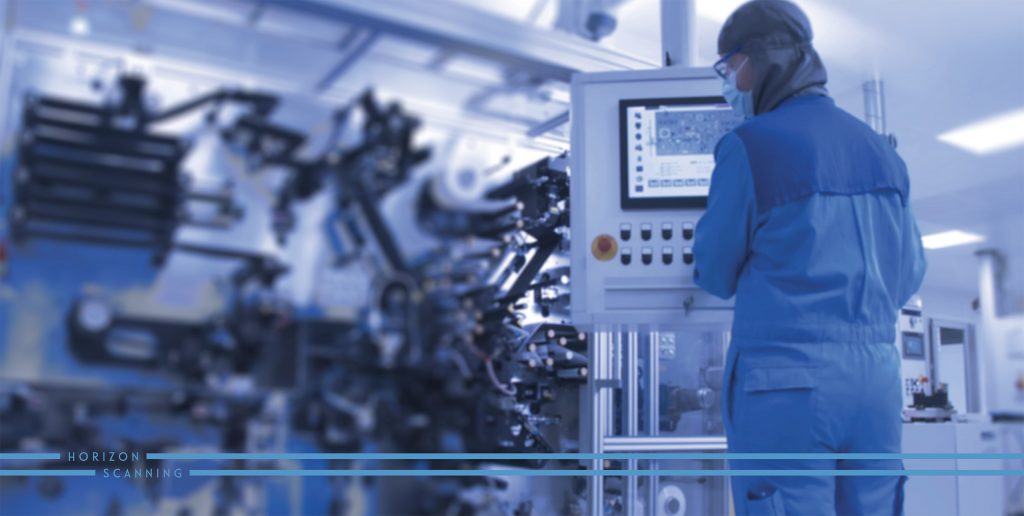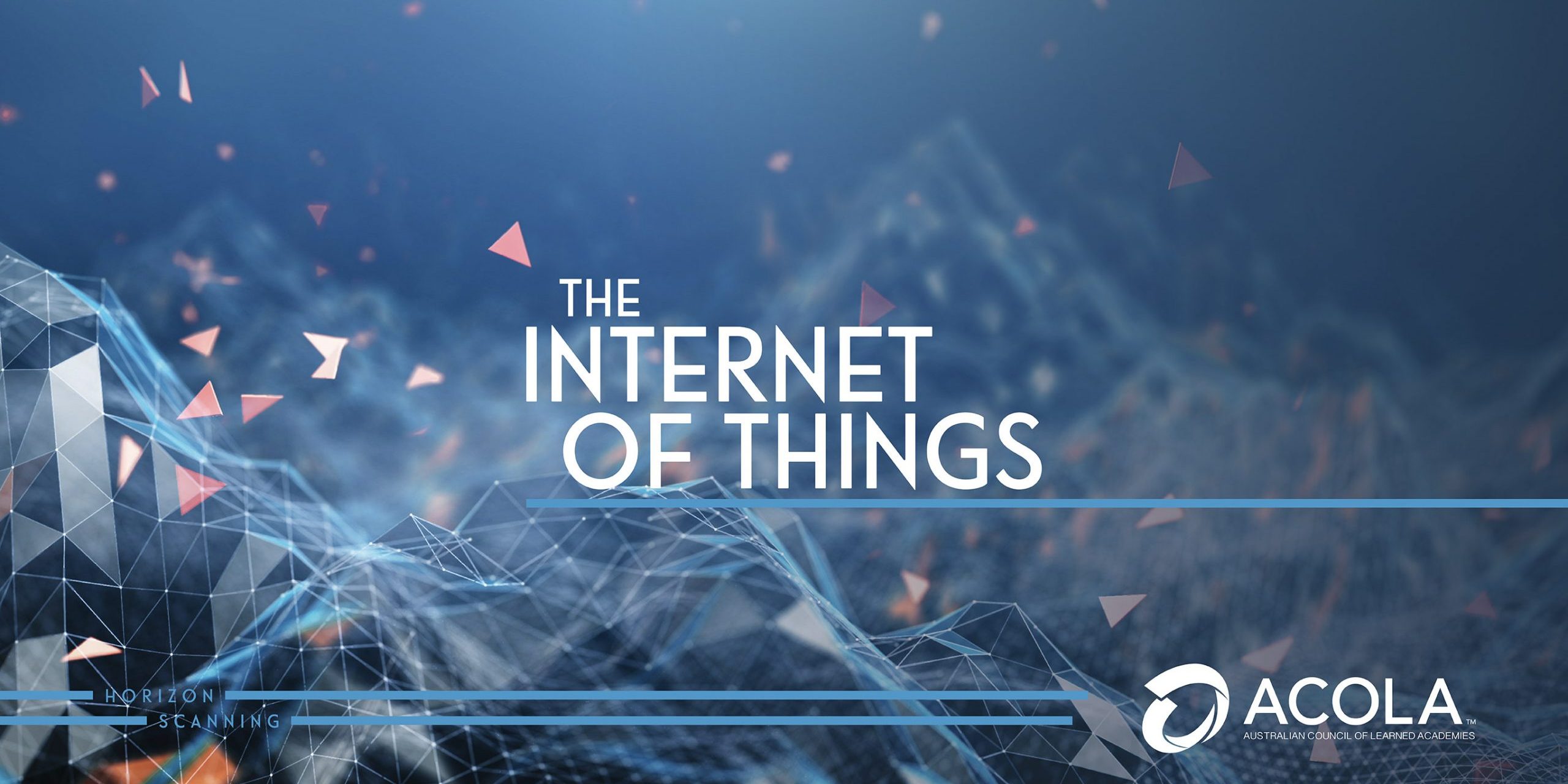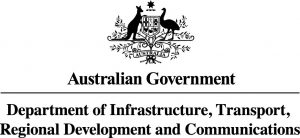Horizon Scanning Series
The Internet of Things (IoT) presents exciting opportunities to reimagine the way that we live in our cities and regions.
As the IoT is further developed, not only will enterprise and industry be transformed, but so too will be the way we interact with each other and the world around us.
For Australia to thrive through such transformation, it must examine the opportunities, risks and consequences of IoT and establish ways to foster technological leadership while ensuring responsible deployment.
The ACOLA report examines current and future IoT applications in cities and regions, including public service delivery, healthcare, transport, advanced manufacturing, freight and logistics and the creative industries. As with all Horizon Scanning reports, it takes an interdisciplinary approach to assess opportunities and challenges, arguing for a balanced and considered approach by government, industry and community to maximise the IoT opportunity for Australia’s economy, while safeguarding citizen rights.
“Reflecting on the challenges of 2020, IoT could help us monitor environmental disasters, support pandemic management and enhance the delivery of services to regional and remote populations.”
Dr Alan Finkel AO FAA FTSE FAHMS, Australia’s Chief Scientist
This Horizon Scan aims to:
1. Examine the impact the IoT is likely to exert on Australia over the coming decade.
2. Identify and assess the opportunities and challenges presented by the deployment of the IoT in Australia, both in key industry sectors and as an economy-wide enabler, including:
- the scientific, technological, economic, security, social, privacy, data ownership, regulatory and other impacts of the different IoT technologies, applications, data and users
- the future education, workforce, regulatory and infrastructure requirements to support the practical measures governments, industry and other stakeholders could consider to maximise the benefits of IoT deployment and mitigate potential harms.
3. Explore the interrelation of IoT systems, people and the underlying infrastructure (e.g. communication systems, transportation) that is essential to modern life.
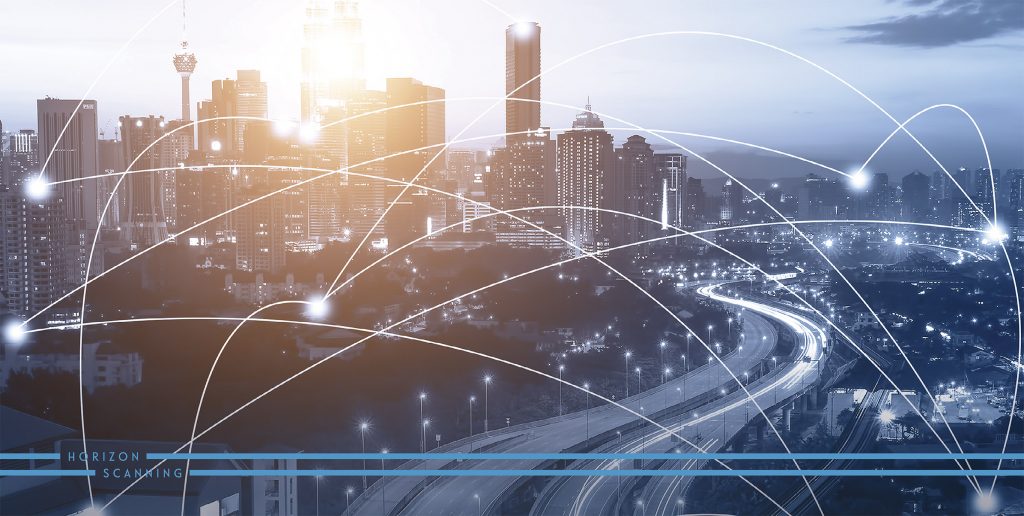
1. Australia could consider a national approach on IoT, with a view to responding to the opportunities and challenges that IoT present over the next decade, building on existing industry and government efforts.
2. Australia should focus on areas of strength and comparative advantage to bolster our competitiveness in the global IoT market. This includes leveraging our geographic and climate diversity to test novel IoT applications.
3. Opportunities to implement the IoT to improve wellbeing and quality of life in Australian cities and regions will enable greater understanding of the technology and its applications by government, businesses and communities.
4. Digitalisation is expected to continue at a rapid pace over the next decade. It is important to ensure that data collection, usage and application from the IoT and related digital technologies is ethical, meaningful and fit for purpose, supported by appropriate legislation and regulatory frameworks.
5. Regulatory frameworks and policy guidelines should be technology-neutral, flexible and principles-based building on existing frameworks. This will ensure they are consistent with international standards, and can respond to future technological developments and changing consumer behaviours and preferences over the next decade.
6. Australia should continue to be proactive in its approach to security and could establish baseline protection and redress mechanisms. These will need to be adapted as the digital landscape evolves and new risks arise, including in the context of increased IoT adoption and deployment.
7. Early and proactive community education and engagement is necessary to encourage community awareness, acceptance and trust of the IoT and related digital technologies, particularly as IoT devices and applications become more widespread and embedded in our built environment.
8. Close industry–government–education collaborations will help to ensure that Australia’s workforce acquires the new skills and enhanced capabilities necessary to thrive in an IoT‑permeated economy.
9. Research priorities will continue to evolve as IoT technologies mature. Proactive assessment of research gaps and consideration of associated funding towards these will ensure that the IoT is developed in a responsible and measured approach.

Graphic image of 9 key findings
The IoT can be understood as a distributed measurement and control system, connecting smart objects, devices, networks and platforms, that collects, processes and analyses real-time data to enable a broad range of applications and functions. Recent advances in IoT enabling technologies such as 5G, edge computing and low powered artificial intelligence have elevated the urgency to embrace IoT platforms for Australia to remain globally competitive.
IoT devices and applications have far-reaching uses and benefits, some of which present novel opportunities. These are achieved through devices and systems that enable:
- locational awareness
- environmental awareness
- medical monitoring
- industrial monitoring
- real-time remote operation of assets
- operation at continental scale.
The IoT already exists in a nascent form; however, rapid developments in wireless connectivity, miniaturisation and advances in AI will enable the IoT to become embedded into the fabric of our society, much like the conventional Internet. The opportunity is vast, but there are also risks, including: not mitigating the harms or unintended consequences of the IoT, or being unprepared to capitalise on this technology.
Over the next decade, IoT capabilities will increasingly become embedded into services and products. The capture of exponentially increasing volumes of granular data will enable us to analyse patterns, anticipate changes and alter objects and the surrounding environment. The data will also help us to optimise the services and products that generated the data and will drive future innovation and research. A critical aspect of IoT development over this period will be advances in data analytics and AI to expand human-to-machine or machine‑to‑machine (M2M) interactions and edge computing. Devices are increasingly smaller, lower-powered and have the computational output to make decisions at the edge of the network. Potential benefits are multifactorial, with the opportunity to improve processes and systems across society – within the home, across industries and in public service delivery.
To capitalise on this opportunity, Australia must look to niche areas of strength or comparative advantage. For example, advanced manufacturing (where the application of Industrial IoT is known as Industry 4.01) and the health sector are already beginning to understand and use the IoT to increase productivity and reduce costs. Australia should also consider leveraging its unique geographic diversity, climate and dispersed population as a testbed for future applications.
The Australian and state and territory governments are already progressing a range of initiatives that will help support Australia’s transition towards a digital economy, both in managing the technologies and preparing the workforce. Many of these lay the foundation for supporting the effective implementation of the IoT, as well as other emerging digital technologies, such as AI and blockchain. Further actions will be needed that address the specific needs of the IoT and emerging technologies in general, to ensure that its continued adoption is smooth, cost effective and supports responsible and ethical usage, especially in the areas of data privacy and cybersecurity.
Opportunities and challenges
Cities and regions
There are opportunities to promote the development of smart cities and regions through the measured introduction of IoT technologies. In cities, current and potential benefits include: (i) energy use, such as rooftop home solar installations connecting to the national electricity market to manage energy consumption and resale of excess stored energy; (ii) enhanced citizen and government engagement, such as using IoT sensing ecosystems and mobile apps to provide real-time information on weather and public transport; (iii) improvements to service delivery, such as smart lighting and smart bins to enhance the use of public spaces and buildings; (iv) healthcare, using wearables such as insulin monitors to manage remote patient care; (v) enhancing student experiences education by monitoring facilities and services such as the use of shared study areas.
In RRR areas, benefits include (i) cost savings and efficiencies in agriculture and resource use, for example monitoring environmental conditions such as soil moisture to improve crop growth; (ii) improved quality of and access to healthcare, for example using IoT wearables to enhance patient-centred care, which is currently limited by distance and cost; (iii) enhancing education experiences, for example by enabling access to data from IoT systems in urban-located facilities such as research labs to support distance learning and research; and (iv) disaster and emergency management, such as monitoring environmental conditions to prevent and manage bushfires and drought.
Challenges include assessing connectivity and access, as well as identifying potential risks and unintended consequences that may occur with the uptake of an emerging technology. For example, while industry tends to highlight the energy-saving benefits of IoT technologies, research has demonstrated that usage may in fact increase overall energy consumption in households due to factors such as increased convenience, known as rebound effects. Energy efficiency strategies may not be sufficient and could be complemented by sufficiency strategies2 and evaluations of energy consumption by IoT in practice, as well as community education and awareness raising.
The environmental and sustainability impacts of the manufacture and usage of IoT devices are also likely to be substantial. Growing dependence on devices to support our digitally enhanced lifestyles is likely to lead to the exponential growth of e-waste, arising from virtual wear-out, planned obsolescence or vendor lock-in. Holistic and sustainable design approaches will be important for industry and government to consider as ways to mitigate these risks.
Security
Security vulnerabilities will be an ongoing challenge as IoT applications become more ubiquitous over the coming decade. Australia should continue to be proactive in its approach to security to ensure that minimum baseline protections and redress mechanisms meet citizen expectations. Australia’s ongoing participation in international standards committees will continue to play an important role in monitoring and managing national privacy and security interests as well. Care should also be taken when sourcing IoT devices or components from countries with poor security and privacy track records. Governments could provide leadership in protecting personal data and helping Australians to be aware of and understand security risks associated with IoT technologies.
Privacy and data
It is likely that a greater quantity of data, including personal or sensitive data, will be collected and processed by industry. However, users’ knowledge of what and how much data are being collected and by whom, the uses of that data and how long data are used may be limited. Ensuring that legislative measures in Australia are cohesive and adequate at establishing a baseline of protection and responsibility is a key consideration for the Australian Government. National data standards that build on the ongoing work of the Office of the National Data Commissioner (ONDC) could provide guidance on the definition, capture, analysis and reconciliation of data across all three levels of government. It will be important for governments and industry to consider the usability, availability, security, integrity and commercialisation of data as IoT applications extend into diverse industry and public service contexts and supply chains over the next decade.
Standards and interoperability
International IoT standards are currently heterogenous, and consolidation over the next decade will increase the likelihood of effective implementation internationally and domestically. There is growing recognition for the need for collaboration through international forums and standards-making bodies to provide both international guidance to industries and countries. Australia’s continued participation in international standards committees will be important to manage our interests and monitor international developments. Building on existing frameworks and national and international regulations on data security and privacy, our domestic approach to standards should continue to focus on being technology-neutral, flexible and principles-based. With this approach, Australia could be a model for other countries seeking to develop the IoT in a measured and responsible manner.
The mobility sector may face specific challenges with interoperability due to manufacturing mostly occurring overseas. Consistent regulations across states and territories will reduce industry uncertainty and prevent barriers to the deployment of CAVs, particularly by overseas manufacturers, given Australia’s relatively small market size.
Social and community considerations
Across Australia and internationally, communities are at relatively early stages in their engagement with the IoT. It is still unclear how the IoT will interact with social change factors in the Australian context. Research is required on the social and cultural dimensions of IoT use across the broad range of potential domains in Australia, including farming, education, healthcare, transport and industry, as well as consumer IoT devices. Current knowledge gaps include how Australians across these domains understand what is meant by the IoT, what benefits they gain from these technologies, factors that might affect their use or avoidance of the IoT and what developments and improvements would help the IoT to better suit their needs. In addition, it would be beneficial to assess the potential for the IoT to exacerbate existing inequalities or create new impacts or harms, such as the impact on the elderly or children, Indigenous communities or those who may choose to opt out of this technology.
Proactive stakeholder engagement and alignment with community values will be integral to building trust and demonstrating the value of IoT initiatives and products to Australians.
Jobs, training and research
The inter-connected nature of the IoT and related technologies, such as Industry 4.0, block-chain and machine learning, is expected to have compounding effects, impacting the job market more significantly than through the independent use of these technologies. The expected digital disruption and complexity of the IoT is therefore likely to require the development of both ‘hard’ technical skills and ‘soft’ non-technical skills over the next decade.
A domestic IoT industry is likely to create jobs in network design, planning and implementation, cybersecurity, energy management, and data monitoring, management and analysis. Other potential areas include Industry 4.0, and sensor and systems design and management. To meet these needs, Australian universities have begun to offer IoT-specific subjects and degrees. This is likely to provide new opportunities in international education to support a domestic and international workforce, building on Australia’s existing global reputation for high quality education.
As jobs evolve over the next decade, businesses and government could actively assess opportunities to promote the importance of continuous learning, in order to skill, re-skill and upskill workers. Targeted up-skilling programs and innovative learning methods, including augmented reality (AR)-based training, game-based learning and micro-credentials, may help bridge skill shortages. Support may be required for small to medium enterprises (SMEs) to upskill their workforce.
Important enablers to support an IoT-capable workforce include partnerships between industry, education and employers to facilitate access to industry-relevant training, as well as the necessary cloud and network infrastructure for student learning. It will also be important to future-proof the national curriculum to ensure that students have a mixture of hard and soft skills. Trainers and teachers at all levels will need to up-skill and acquire the necessary knowledge to equip students for the changing workforce, with government and industry playing a crucial part in this process.
If the IoT becomes ubiquitous across Australia, it may provide new opportunities for employment and education in RRR areas. For example, increasing requirements for the storage, hosting and security of data have led to the establishment of data centres in RRR areas, which may lead to the creation of jobs in cloud and hosted services. To support education and the creation of IoT jobs, ongoing institution-wide commitment and collaboration between vocational education and training (VET) providers, universities, external agencies and community networks will be needed.
Areas for future research include new and novel IoT applications; the number of devices in Australia; the economic value of data, with particular respect to the shifting boundaries of property rights regimes; social impacts of IoT across homes; smart cities and RRR areas; future environmental impacts of devices; the use of CAVs; and ongoing research into the use of radiofrequency electromagnetic energy (RF EME) and 5G to reassure the Australian public.
National approach
This report outlines a range of opportunities and challenges, as well as practical actions and measures that Australia could consider in the deployment of IoT responsibly and effectively in our cities and regions. However, the inherent complexity and breadth of this technology necessitates a national approach to highlight areas where Australia could prioritise its efforts. This would identify and galvanise areas for individual and collective action by government, industry and community. In addition, a national approach would be useful to articulate the potential risks that the IoT poses, as well as the strategies to minimise harms and unintended consequences. This would help build community trust and acceptance and encourage industry to take a considered and measured approach in developing IoT. Engagement and collaboration across community, industry and government is likely to be required. As outlined in the key findings of the report, some areas that could be considered in a national approach are:
- ensuring that Australia has flexible, technology-neutral, principles-based regulatory settings
- establishing minimum safeguards for the digitally illiterate or ambivalent, including open data frameworks, privacy and consumer protection policies, and baseline security measures
- incentivising research and development (R&D) of IoT technologies, particularly in niche areas where Australia has existing capabilities
- engagement of citizens and consumers in the design and development of IoT systems and their implementation
- building early community awareness, trust and acceptance of IoT technologies
- ensuring the necessary connectivity across our cities and regions to enable the use of the IoT
- identifying and supporting initiatives that future-proof our national curriculum, and building capabilities and expertise to create a domestic IoT sector.
By taking a national approach we will be able to realise the potential of this extraordinary but currently poorly understood technology that in time will redefine our society and economy. A proactive approach to adoption will allow Australia to remain globally competitive in the rapidly evolving digital landscape over the next decade.

-
- Download full report (PDF):
- Download summary paper (PDF):
- Download report extract (PDF):
- Media release November 2020 (link):
- Input papers can be accessed at the base of this page.

Expert Working Group
ACOLA, for its established ability to deliver interdisciplinary evidence-based research that draws on specialist expertise from Australia’s Learned Academies, convenes The Internet of Things Expert Working Group (EWG) to guide the development of a targeted study that draws input from several disciplines to create a well-considered, balanced and peer-reviewed report. The role of the EWG is to provide strategic oversight and provide expert input, analysis and provocative thinking.
ACOLA’s expert working group for The Internet of Things report is comprised of:
| Professor Bronwyn Fox FTSE (Chair) | Professor Gerard Goggin FAHA |
| Professor Deborah Lupton FASSA | Professor Holger Regenbrecht |
| Professor Paul Scuffham FAHMS | Professor Branka Vucetic FAA FTSE |
Authors
| Professor Bronwyn Fox FTSE | Professor Gerard Goggin FAHA |
| Professor Deborah Lupton FASSA | Professor Holger Regenbrecht |
| Professor Paul Scuffham FAHMS | Professor Branka Vucetic FAA FTSE |
Supported by Stephanie Chan, Ella Relf, Dr Lauren Palmer, Ryan Winn and the generous contributions of many experts throughout Australia and New Zealand. A full list of contributors can be found in the written submissions section of the report.
Peer Reviewers
This report has been reviewed by an independent panel of experts. Members of this review panel were not asked to endorse the Report’s conclusions and findings. The Review Panel members acted in a personal, not organisational, capacity and were asked to declare any conflicts of interest.
ACOLA gratefully acknowledges their contribution.
| Dr Jathan Sadowski | Professor Dacheng Tao FAA |
| Professor Julian Thomas FAHA | Professor Glenn Wightwick FTSE |
Project Management
| Dr Lauren Palmer | Ryan Winn |
Project Funding and Support
This project has been kindly supported by the Australian Government through the National Science and Technology Council and Office of the Chief Scientist, with funding received from the Australian Research Council (Project number CS170100007); and the Department of Infrastructure, Transport, Regional Development and Communications.
ACOLA gratefully acknowledges the financial support and contribution to the project.
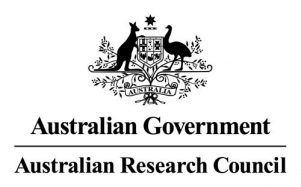 |
|
 |
Report Acknowledgements
ACOLA and the Expert Working Group offer their sincere gratitude to the many experts across Australia who have contributed to the evidence gathering of this report. In particular, we would like to acknowledge the expert contributors, research organisations, peak groups, government bodies and industry organisations who took the time to contribute to the project by way of input papers, submissions and consultation sessions. Further information of these contributions can be found in ‘evidence gathering’.
We also gratefully acknowledge the expertise and contributions from our project stakeholders, stakeholders, and their ongoing support throughout the development of this report. In particular, we would like to acknowledge Dr Alan Finkel, Dr Penny Leggett and Emma Wisdom from the Office of the Chief Scientist; Luisa Powell and Liz Visher from the Australian Research Council; and Sally Todd, Stephen Briggs, Philip Mason, Dr Jason Ashurst, Alice McRorie, Isabelle Cox, Dr Alexander Pound, Alex Wilson and Georgianna Duggan, from the Department of Infrastructure, Transport, Regional Development and Communications.
We also thank our peer reviewers for their valuable contributions in reviewing the report.
We would particularly like to thank the Australian Research Council (project number CS170100007) and the Department of Infrastructure, Transport, Regional Development and Communications for their financial support and contributions to the project.
Our sincere thanks and gratitude to the Expert Working Group, who put a great deal of time, effort and strategic insight into coordinating the report’s conceptualisation and production, and also to the ACOLA team, in particular Stephanie Chan, Ella Relf, Dr Lauren Palmer and Ryan Winn who made significant contributions to supporting the Expert Working Group and managing the project.
Acknowledgement of Country
ACOLA acknowledges the Traditional Owners and custodians of the lands on which our company is located and where we conduct our business. We pay our respects to Elders past and present.
As part of the evidence-gathering to support the development of the report, a call for input was sent to experts in the field. The development of the report has been made possible through their generous contributions. ACOLA and the Expert Working Group would like to sincerely thank the following people.
The views and opinions expressed in these input papers are those of the author and do not necessarily reflect the opinions of ACOLA.
- Advanced manufacturing
We thank Bronwyn Fox for her contribution to this report. - Cybersecurity
Vijay Varadharajan Cyber Security Risks in IoT Systems and Techniques for their Mitigation - Economic analysis
Jason Potts Comments on draft report and economic analysis of IoT - Energy consumption and novel social experiences of IoT
Yolande Strengers, Larissa Nicholls, Sarah Pink Energy Consumption and Novel Social Experiences of IoT - Energy implications of the IoT
Rod Tucker Energy Implications of the Internet of Things - Freight and logistics
Kim Hassall What Could the IoT mean for Supply Chains in Australia? - Healthcare and health service delivery
Jaimon T. Kelly, Katrina L. Campbell, Paul Scuffham The Internet of Things: Impact and Implications for Health Care Delivery - IoT and the future workplace
Pi-Shen Seet, Janice Jones, Anton Klarin, Yuliani Suseno IoT and the Future Workforce: Potential Implications - IoT and indigenous communities
Tyson Yunkaporta An Indigenous Viewpoint on the Internet of Things - Legal, ethical and human rights
Kayleen Manwaring, Cachelin Hall Legal, social and human rights challenges of the Internet of Things in Australia
Herbert Smith Freehills – Tony Joyner, Natasha Blycha, Alex Cook with support from Ariane Garside, Michael Faithfull, Oli Tod, Rafael Lawrence Privacy, security and the Internet of Things - Novel data and information considerations with IoT
David Eyers, Holger Regenbrecht Novel Data and Information Considerations with IoT - Monitoring and surveillance in the contemporary workplace
Peter Holland Monitoring and Surveillance in the Contemporary Workplace - Psychological impacts of IoT
Kit Huckvale IoT and the Individual - Radiation and 5G
Ken Karapidis, Australian Radiation Protection and Nuclear Safety Agency (ARPANSA) Electromagnetic energy emissions and health - Satellite and space technology
Australian Space Agency – Megan Clark Emerging space-based infrastructure for the Internet of Things - Service delivery, philanthropy and creative sectors
Sarah Barns The Internet of Things (IoT) and key issues for future services
Josh Reid Jones Internet of Things across social and community services, the GLAM sector, creative sector and philanthropy - Smart homes and cities
Internet of Things Alliance Australia – Geoff Heydon, Frank Zeichner Smart Homes into Smart Places & Infrastructure and Utilities Management - Smart mobility
Hussein Dia, Rusul Abduljabbar, Sohani Liyanage Smart Mobility: Unlocking the Value of the Internet of Things - Sustainability and environmental impact
Marcus Foth, Peta Mitchell, Monique Mann, Markus Rittenbruch, Irina Anastasiu Some Environmental Sustainability Concerns about IoT-enabled Smart Cities - Social considerations
We thank Deborah Lupton for her contribution to this report. - Telecommunications
Zhanwei Hou with contributions from Peng Cheng, Wibowo Hardjawana, Yifan Gu, Branka Vucetic Telecommunications - Ubiquitous interfaces and pervasive augmented reality
Tobias Langlotz, Holger Regenbrecht Ubiquitous Interfaces and Pervasive Augmented Reality
We would also like to acknowledge Professor Hai Vu Le for his contribution to this report.
